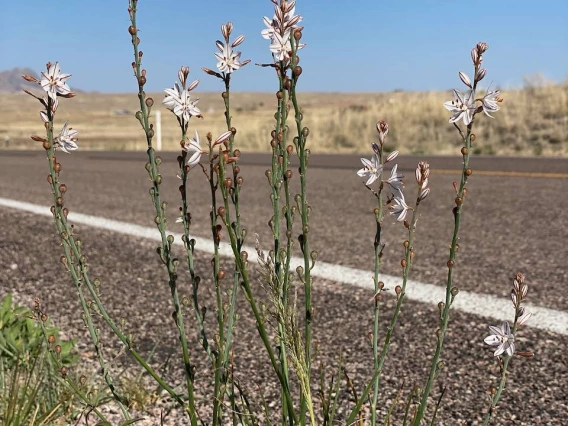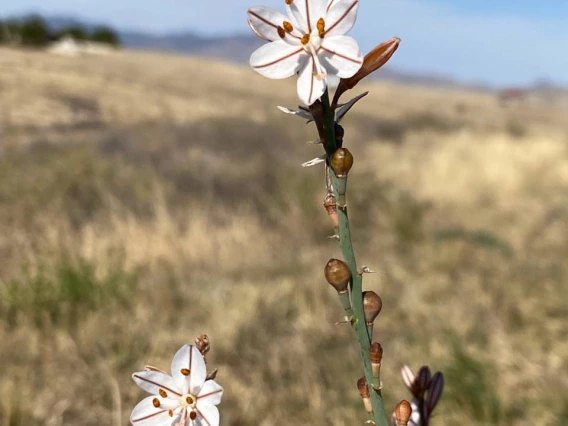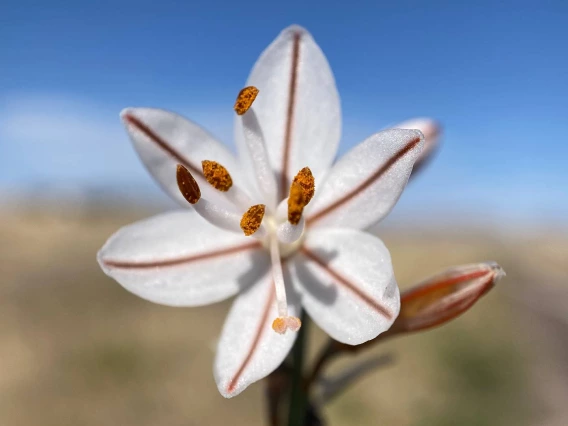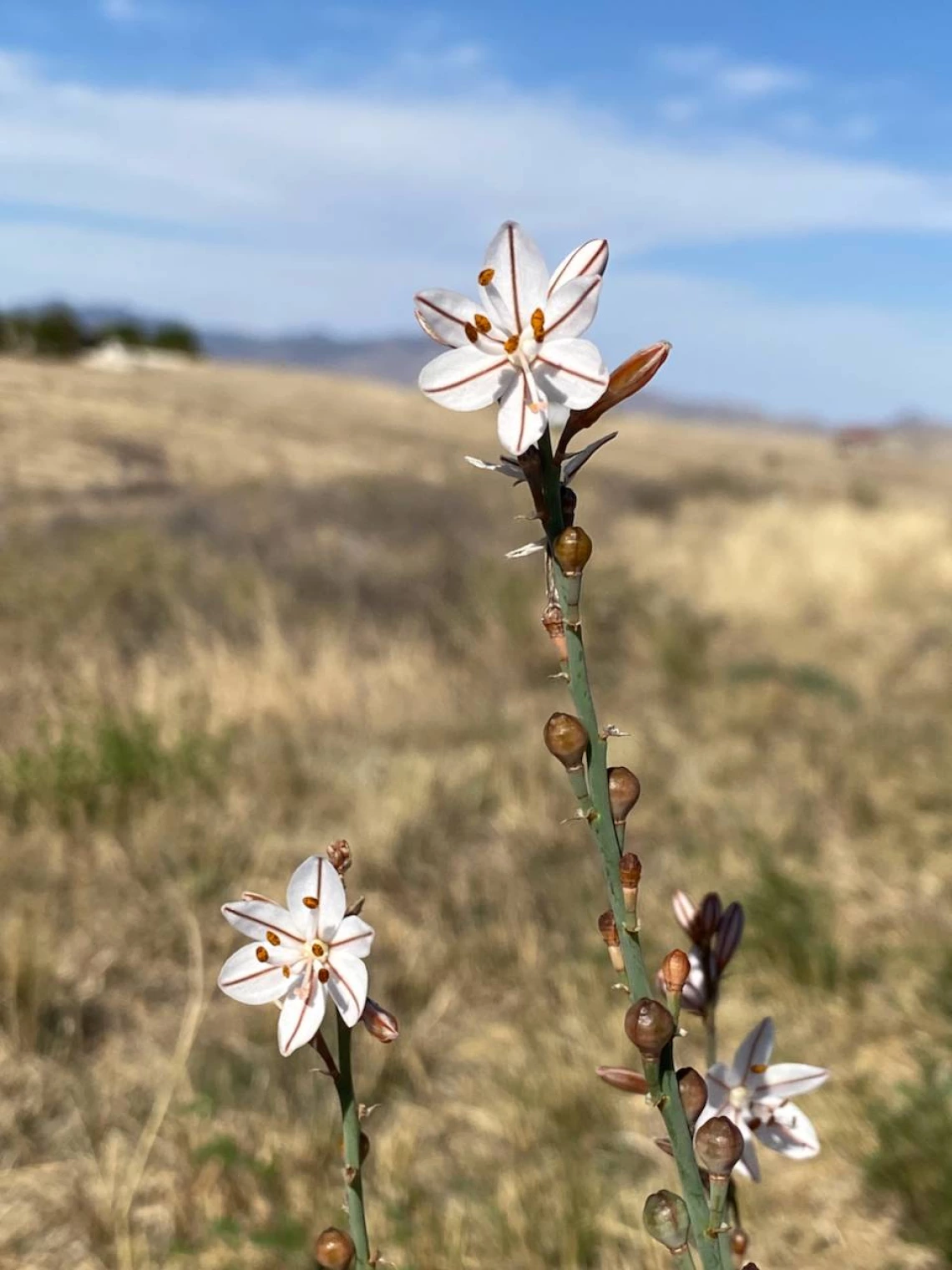Image
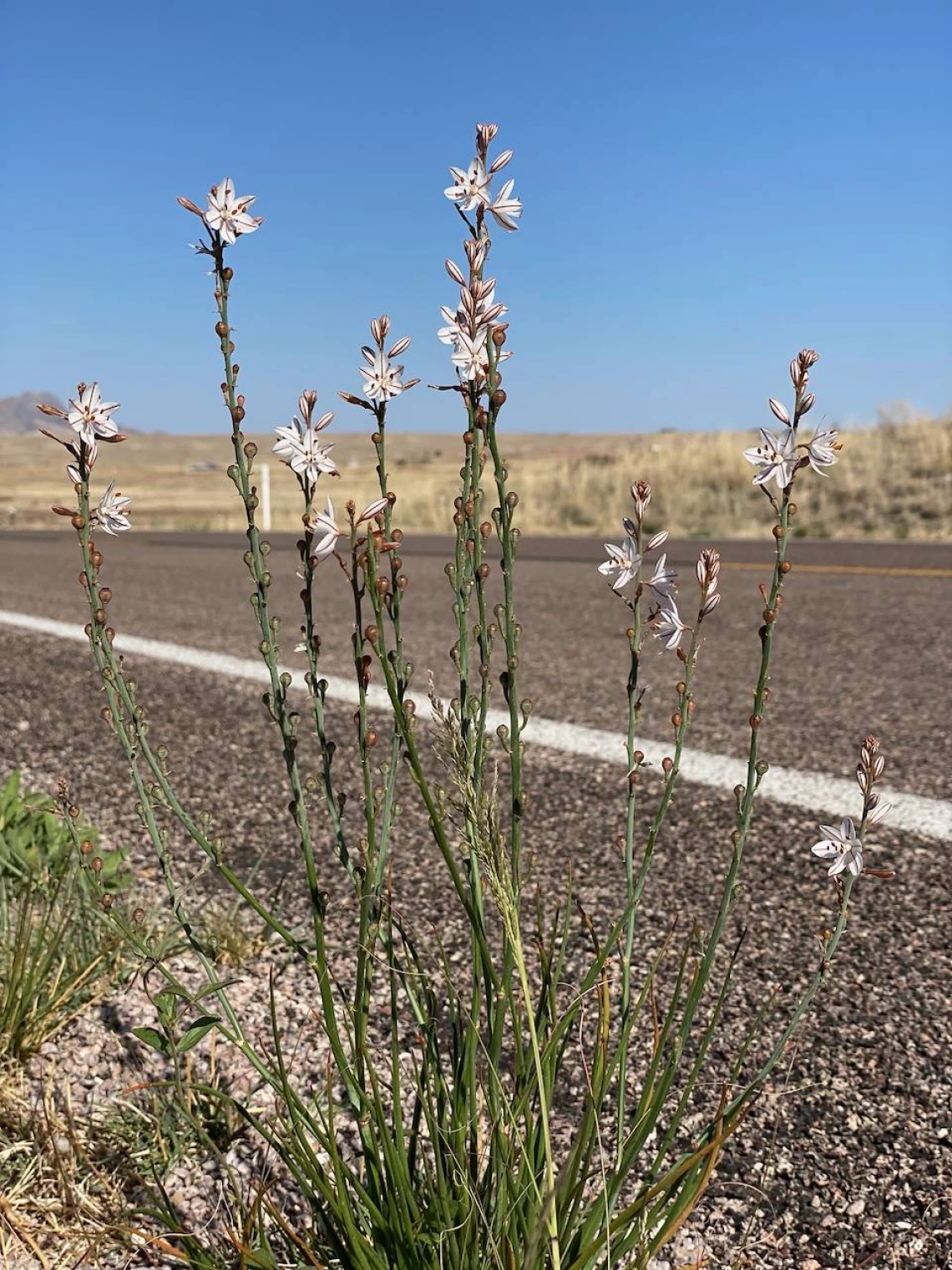
Sue Carnahan
Common Name(s)
Onionweed
Hollow-stemmed asphodel
Onion-leafed asphodel
Pink asphodel
Scientific Name
Asphodelus fistulosus
Family
Lily family (Liliaceae)
Reasons for concern
Onionweed outcompetes native plants for water nutrients, and minerals. They grow in dense patches, which prevent native seeds from germinating.
Classification
Federal noxious weed
Botanical description
Dark green plant with cylindrical arching leaves and small white flowers
Leaves
Smooth, hollow, cylindrical leaves up to 15 inches long. They grow from a central bunch
Stem(s)
Stiff, erect stems up to 2 ½ feet tall, where the flower grows
Flowers
¾ inch 6 petal white to pinkish flowers. Petals have a brown stripe down the center. Flowers grow alternating on erect stems.
Fruit
Brown spherical fruit with 3 segments. Each fruit has 3-6 small, triangular brown to black seeds
Native to
Mediterranean
Where it grows
Riparian environments, washes, gardens, roadsides, disturbed sites
Lifecycle
Annual
Reproduction
By seed
Weedy Characteristics
Onion weed is a profilic grower, seed producer, and is drought resistant.
Look-alike Plants
Desert lilly (Hesperocallis undulata) can be distinguished by its larger flowers without brown stripes. The leaves are not hollow cylinders, but basal rosette leaves are linear blades with wavy margins.
Control Strategies
Onionweed is easily removed by hand pulling. Don't use it as landscaping.

